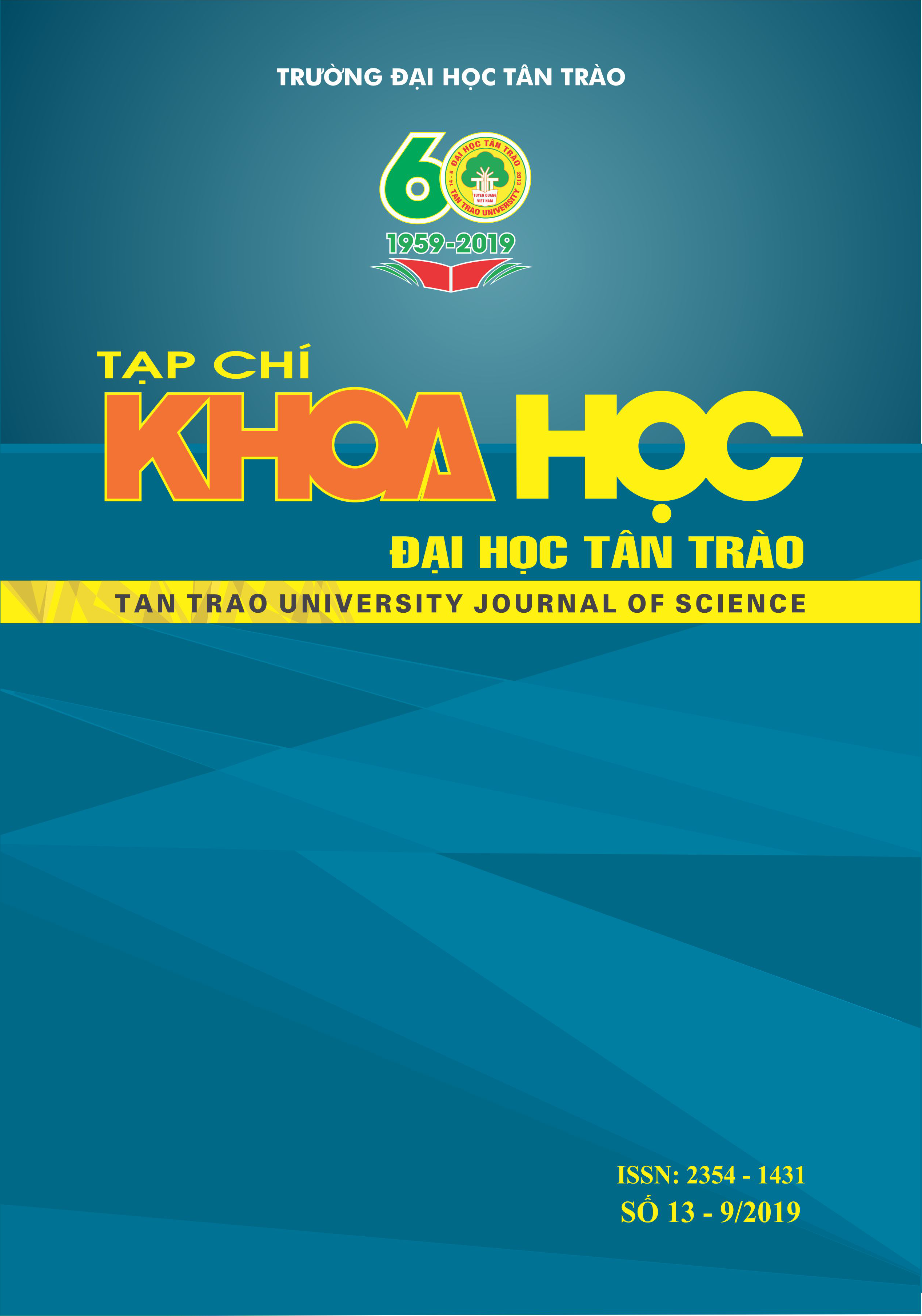The art of poetry written for children by Duong Thuan
DOI:
https://doi.org/10.51453/2354-1431/2019/293Keywords:
Children’s poems, Duong Thuan, nature, seasons, trees, fruits, flowersAbstract
Duong Thuan, a Tay poet, controls a poetry playground by himself. Writing poetry for children is not only part of his over-twenty-year brilliant career, but also he affirmed his own style in Vietnamese children’s poems. Children's poetry by Duong Thuan has many unique characteristics of content and art that should be studied and introduced. In this article, we study some artistic aspects of poetry written for children by Duong Thuan, through poetry collections such on that basis, we will affirm Duong Thuan important position in modern Vietnamese children's literature
Downloads
References
1. Nhiều tác giả (1997), Văn học các dân tộc thiểu số Việt Nam, Nxb Văn hóa Dân tộc
2. Lê Bá Hán - Trần Đình Sử - Nguyễn Khắc Phi (1992), Từ điển thuật ngữ văn học, Nxb GD.
3.Đỗ Thị Thu Huyền (2009), Dương Thuấn hành trình từ bản Hon, Nxb.Hội nhà văn.Tr.13
4. Lã Thị Bắc Lý (2012), Giáo trình văn học trẻ em, Nxb. Đại học sư phạm HN.
5.Trần Thị Nương (2009), “Thơ Dương Thuấn – Dòng sông Tày chảy mãi…, Báo Dân tộc & Phát triển 19/01/2009.
6. Chu Văn Sơn (2010), Khu vườn thiếu nhi của chú Dương Thuấn, Lời giới thiệu Tuyển tập Dương Thuấn (tập 3), Nxb Hội nhà văn.
7. Vân Thanh 2003, (tập 1) Văn học thiếu nhi Việt Nam, Nxb Kim Đồng, Hà Nội.
8. Dương Thuấn (2010) Tuyển tập Dương Thuấn (2010), Nxb Hội nhà văn.
Downloads
Published
How to Cite
Issue
Section
License

This work is licensed under a Creative Commons Attribution-ShareAlike 4.0 International License.
All articles published in SJTTU are licensed under a Creative Commons Attribution-ShareAlike 4.0 International (CC BY-SA) license. This means anyone is free to copy, transform, or redistribute articles for any lawful purpose in any medium, provided they give appropriate attribution to the original author(s) and SJTTU, link to the license, indicate if changes were made, and redistribute any derivative work under the same license.
Copyright on articles is retained by the respective author(s), without restrictions. A non-exclusive license is granted to SJTTU to publish the article and identify itself as its original publisher, along with the commercial right to include the article in a hardcopy issue for sale to libraries and individuals.
Although the conditions of the CC BY-SA license don't apply to authors (as the copyright holder of your article, you have no restrictions on your rights), by submitting to SJTTU, authors recognize the rights of readers, and must grant any third party the right to use their article to the extent provided by the license.


